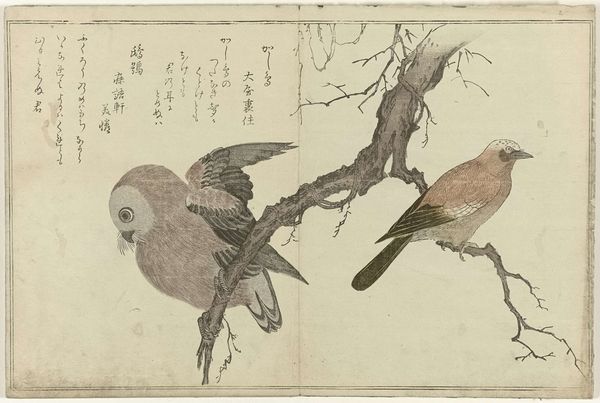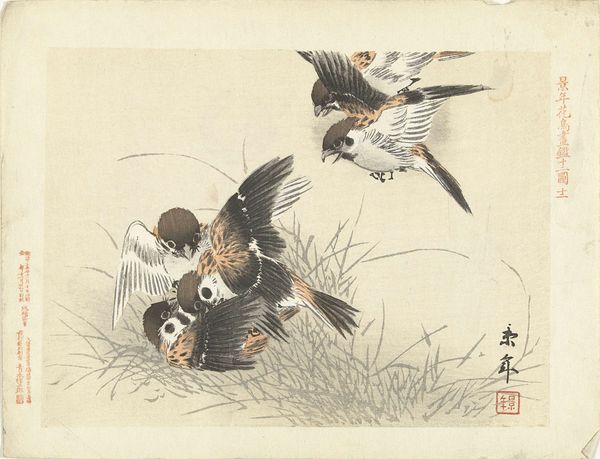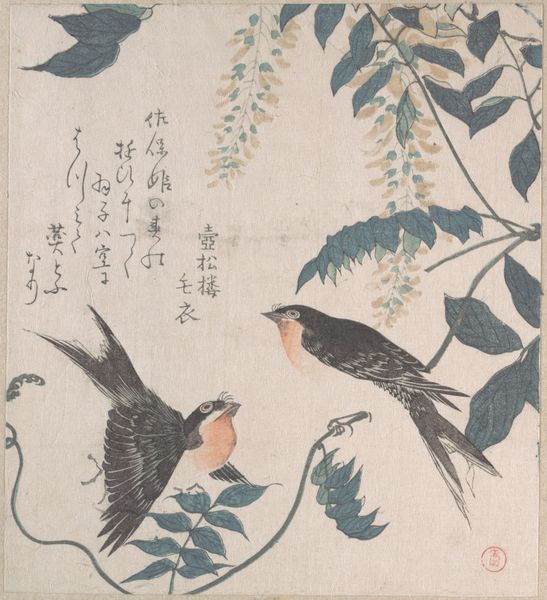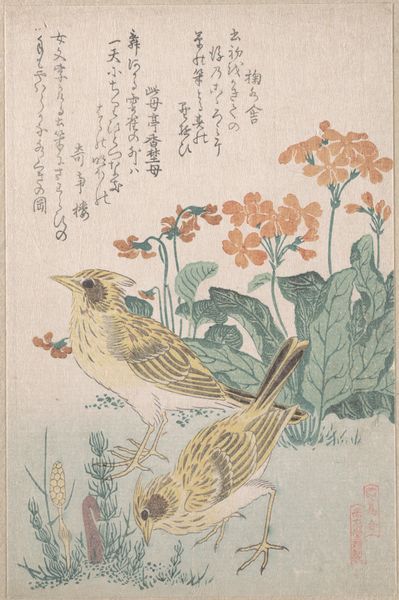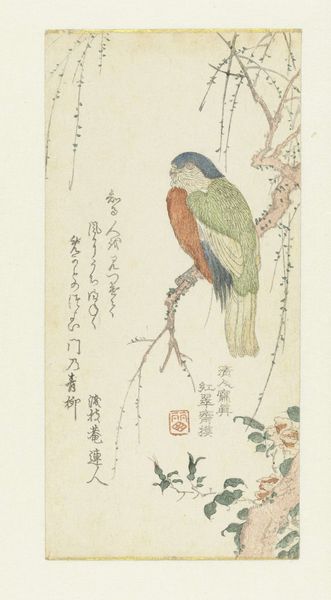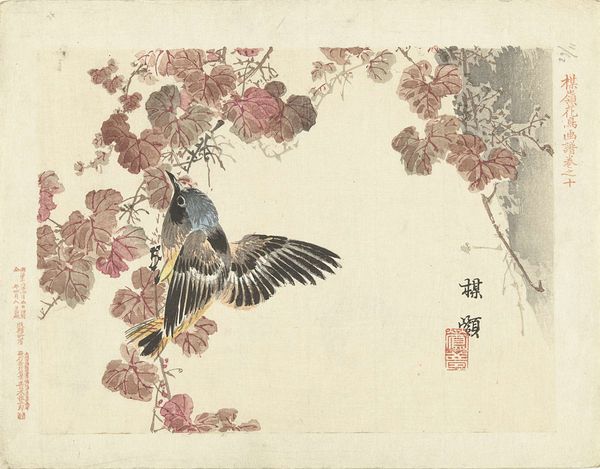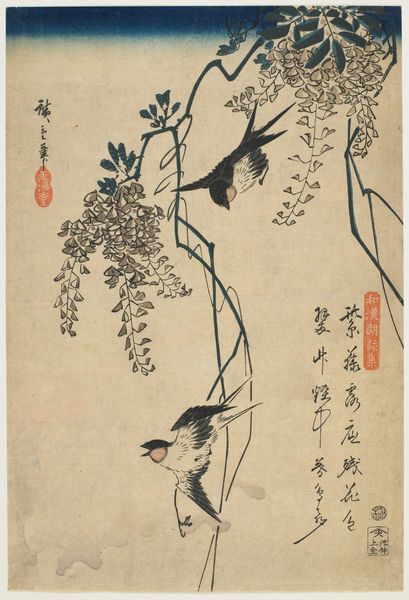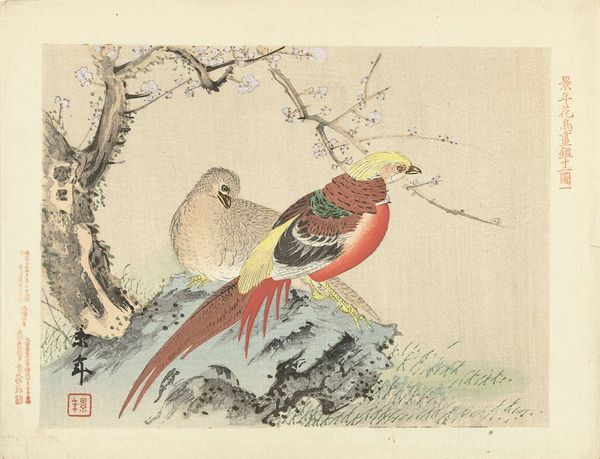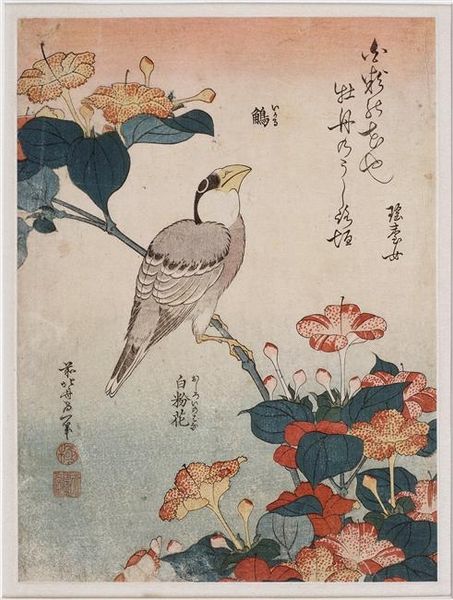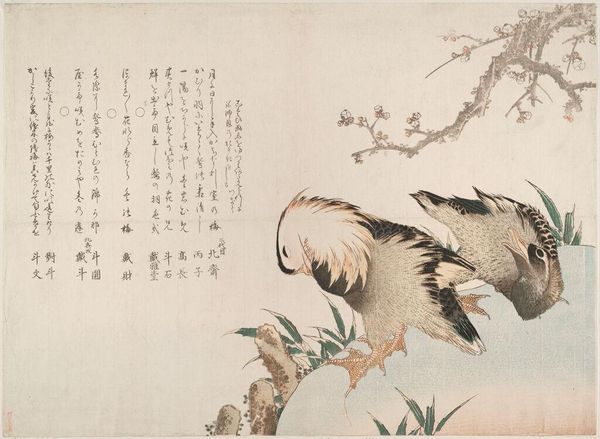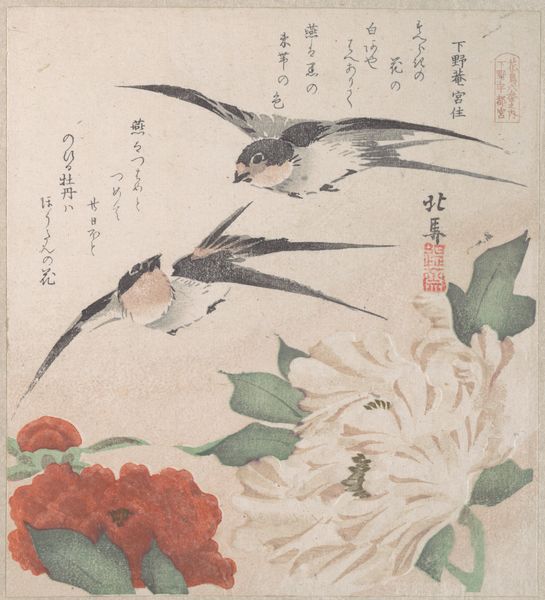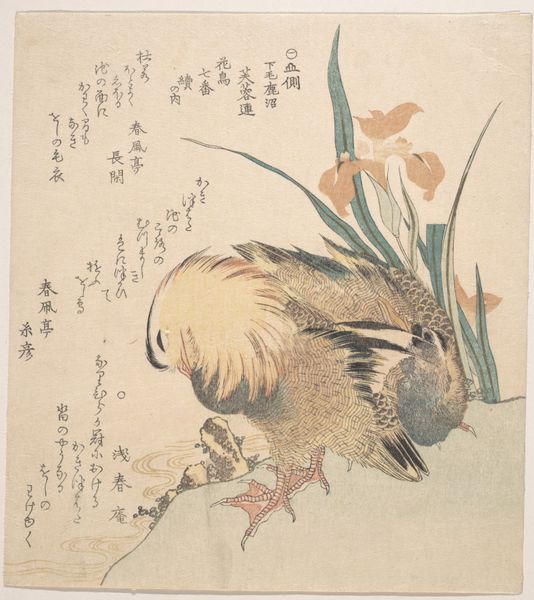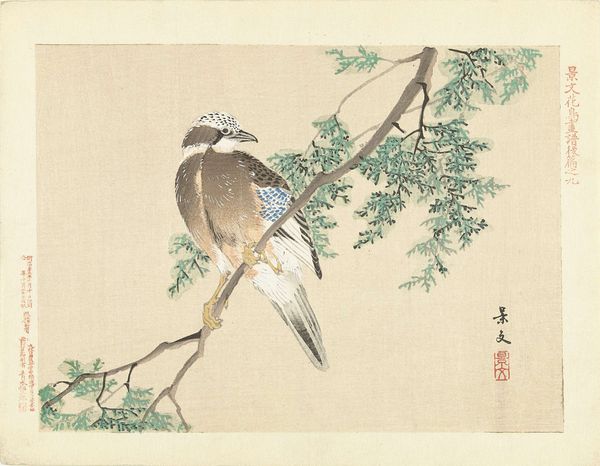
print, ink, woodblock-print
# print
#
ukiyo-e
#
ink
#
coloured pencil
#
coffee painting
#
woodblock-print
#
botanical drawing
Dimensions: 9 5/16 x 14 11/16 in. (23.6 x 37.3 cm) (image)9 7/8 x 14 13/16 in. (25.1 x 37.7 cm) (sheet)
Copyright: Public Domain
Curator: We're standing before "Mallards and a Kingfisher," a print created around 1790 by Kitagawa Utamaro. It's currently held in the collection of the Minneapolis Institute of Art. Editor: My immediate impression is one of serenity. The composition, the soft palette—it evokes a sense of quiet contemplation by the water's edge. Curator: It's an excellent example of ukiyo-e, the "pictures of the floating world." Woodblock prints like this were central to Edo-period Japan, depicting scenes of everyday life, landscapes, and popular culture for a broad audience. They circulated as a commodity. Editor: And it is important to recognize that the circulation of prints contributed to the shaping of cultural identities and aesthetics, and even contributed to a sense of national identity. This print does exactly this: It idealizes nature and a gentle scene with animals, but does this portrayal gloss over realities for certain social groups within Japanese society at that time? Curator: Ukiyo-e prints were integral in promoting Japanese art and aesthetics in the West, greatly influencing Impressionism and Post-Impressionism. This print, featuring these natural creatures, might have reinforced specific ideas about Japanese art and culture. It speaks volumes about how cultures perceive each other. Editor: Looking at the rendering of the birds— the precise detail of the mallard's plumage in contrast to the softer rendering of the kingfisher—it really invites consideration about our relationship with the natural world. Utamaro’s focus urges us to notice the small wonders often overlooked in increasingly urban environments. Curator: It also draws us into a world increasingly impacted by human intervention. Reflecting upon what these birds, as symbols within art, say about Japan's relationship with its natural resources— particularly considering the era's rapid urbanization — adds depth to this piece. Editor: Ultimately, a print like this serves not just as aesthetic pleasure, but as an ongoing dialogue about environment, identity, and how these converge to mold society and the very concept of what makes a nation unique. Curator: A great artwork for its depiction of nature but also for encouraging the study of societal challenges during Utamaro's period.
Comments
No comments
Be the first to comment and join the conversation on the ultimate creative platform.
